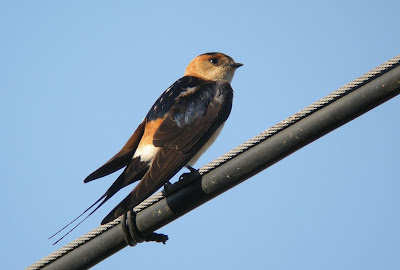Sunday morning began with an early drive to the edge of The Forest of Bowland at Oakenclough where the ringing site is topped up with bird food twice a week, even when the weather prevents any ringing there. In addition to enabling a study of birds on site the supplementary feeding station adds to natural foods available to birds in the leaner winter months. Studies have shown that giving wild birds’ additional food on a regular basis can assist their survival and enhance breeding success in the following spring.
All seemed quiet around the feeding spot with no sign of the 40+ Goldfinch from earlier in the week and just two or three hanging about near the Nyger seeds. Goldfinch flocks are highly mobile so I hope the birds weren't too far away, especially as it was last November and into December which produced very good catches of the species.
With the preponderance of conifer trees here Coal Tits are ever present as their small bills allow them direct access to the tiny holes of the Nyger feeders. Meanwhile the Great Tit, Blue Tits and Chaffinches stay around so as to take food from the ground. We avoid the use of peanuts or mixed seed feeders and instead use Nyger feeders and ground feeding as a means of targeting the several species of finches which occur in this area.
With the preponderance of conifer trees here Coal Tits are ever present as their small bills allow them direct access to the tiny holes of the Nyger feeders. Meanwhile the Great Tit, Blue Tits and Chaffinches stay around so as to take food from the ground. We avoid the use of peanuts or mixed seed feeders and instead use Nyger feeders and ground feeding as a means of targeting the several species of finches which occur in this area.
Coal Tit
Great Tit
Additional birds seen this morning included 8 Blackbird, 2 Mistle Thrush, 1 Great-spotted Woodpecker, 1 Nuthatch, 2 Raven and 2 Pied Wagtail.
Meanwhile there was notification of the recovery of a Lesser Redpoll ringed here on 19th October 2015. A first year male ring number Z652570 was recaptured by other ringers some 16 days later on 4th November 2015 at Woolston Eyes, Warrington, a distance of 61kms from Oakenclough. While the distance involved isn’t tremendous the recovery does once again demonstrate the southerly autumn dispersal of this species, and because the bird is still in circulation it could provide more life history information at a later date. It is probably in France or Belgium right now until the early spring when Lesser Redpolls begin their return migration.
Lesser Redpoll
Lesser Redpoll - Oakenclough to Woolston Eyes
From the A6 at Garstang I took a leisurely drive home via the mosslands of Rawcliffe, Pilling and Stalmine where I counted at least 11 Buzzards spiralling over the fields, with at one point six quite close together in a single kettle of air. I suspect that this morning was one of the few in the last four weeks where the sky was both clear and calm enough for Buzzards to soar.
Buzzard
The fields alongside Lancaster Road are well flooded and it was on just a couple of fields here that I counted 1500+ Lapwing, 30 Golden Plover, 260 Black-headed Gull, 45 Common Gull, 40 Curlew and 6 Skylark.
Nearer to Stalmine was a roadside Kestrel as well as a feeding party of half-a-dozen Redwings and 50+ Fieldfares. The autumn berries are disappearing quickly leaving the Fieldfares to live up to their name and search for animal food in the soft ground rather than concentrate on a dwindling supply of berries in the hedgerows.
Kestrel
Redwing
Fieldfare
Log in next week for more news, views and bird photos on Another Bird Blog.
In the meantime take a look at more birds Stewart's World Bird Wednesday.
In the meantime take a look at more birds Stewart's World Bird Wednesday.






















































































